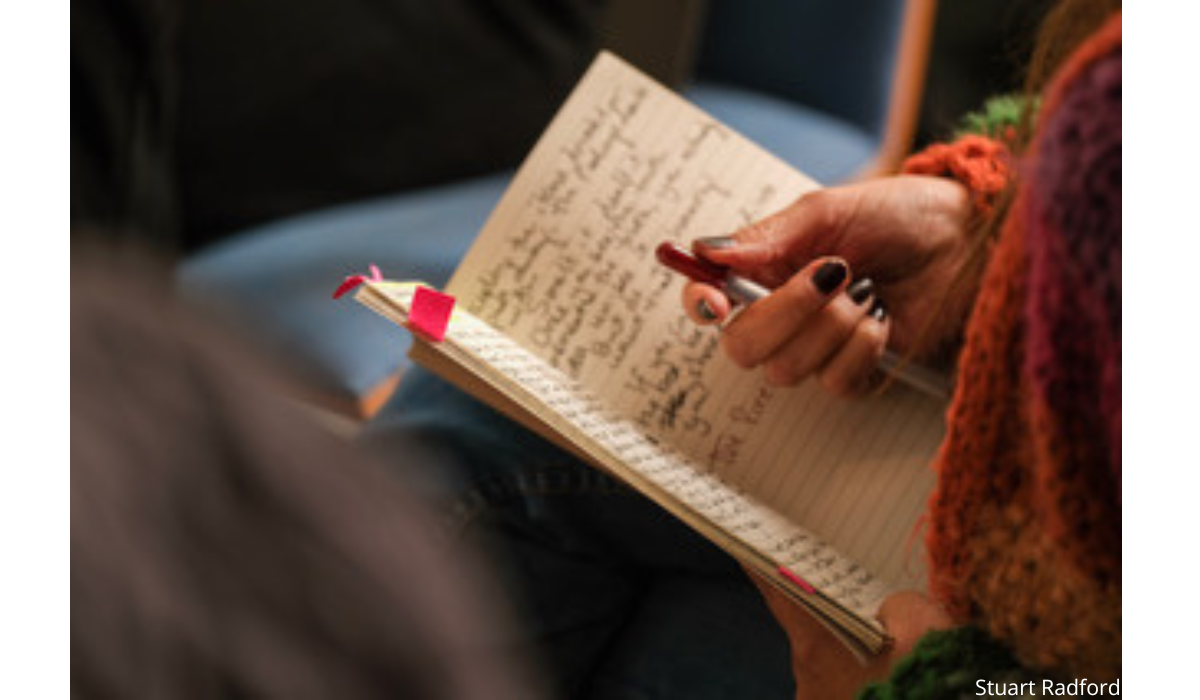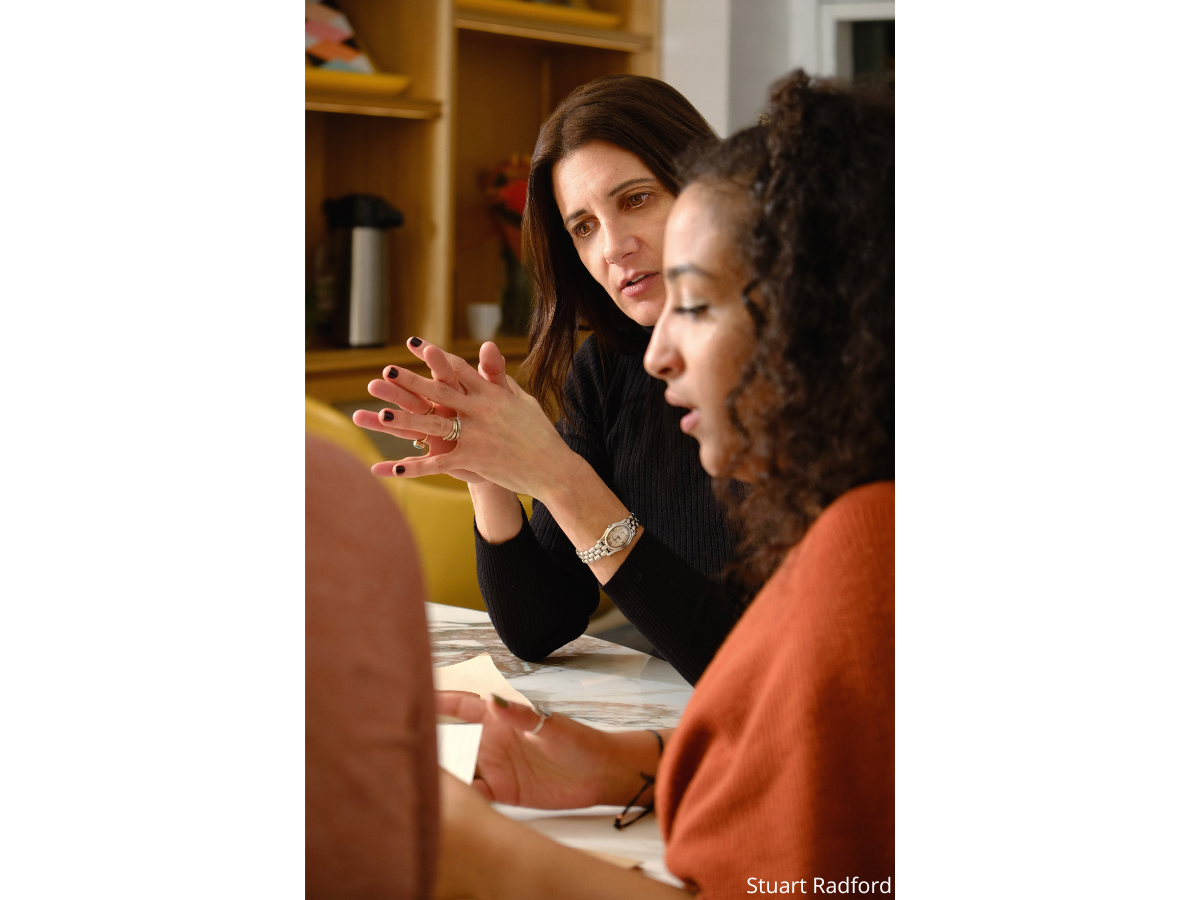Want to Feel More Authentically You? These 5 Steps Will Help You Quit Hiding From Yourself and Uncover Who You Really Are
In 1974, my parents divorced—along with 997,000 other couples. I like knowing this statistic. It helps me realize I am not alone.
I was 6 years old, and that’s when I started hiding from myself—out of shame. Back then, I thought I must have been undeserving. If only I had been “good enough” I could have saved my world from collapsing.
As the decades rolled by, these subconscious, painful beliefs grew. So I learned how to “curate” the me I put out in the world. I’d carefully select and allow others to see only the pieces of me I was proud of. The college athlete. The award-winning teacher. The impressive leader. The admirable partner and mother. My Instagram self.
And I was really good at it. I would’ve received a gold medal in inauthenticity. But the more I “won,” the more lonely I felt because I wasn’t acknowledging and integrating my whole, or authentic self. To try to fill up my bottomless well of insecurity, I put pressure on my spouse and children to perform, to be “perfect.” I kept friends at a distance. I craved approval more than love.
Layer on top of that decades of the difficult stuff life throws at us all—trauma, disease, and death—and you can imagine the results.
Anger. Isolation. Depression.
If you’re tired of the “fit in and be accepted” voice and done with riding a train on tracks laid by others, I can help.
I guide people to reconnect with their whole self through automatic writing: making subconscious thoughts and feelings conscious by moving the pen freely. This process brings you into alignment so you can see how your curated self sabotages you. Once you meet yourself on the page, you can make decisions about what serves you and what you’re ready to let go of.
I get a lot of questions when I talk to people about the transformative power of this writing process. “But I’m not a writer,” they say. “Why can’t I just think about my life?” they ask. “What if I’m afraid of what I see on the page?”
I understand the hesitation. I’ve felt it, too. It’s scary to quit hiding and write your way into the truths that will help you live from a place of healthy authenticity. That’s why, after 27 years of working with more than 3,000 students, I’ve developed five straightforward steps to help you move past what may be holding you back and uncover your whole self.
Step 1: Set Yourself Up With Intention
Begin by preparing your space. You’re stepping into a new arena, so let’s create an environment that feels right. Light a favorite candle or some incense, brew a cup of tea, put on your cozy socks.
Next, reach for some of your favorite poems. My go-to poets describe the natural world in ways that open up my humanity, perception, and sense of living in harmony with others like nothing else.
Now you’re ready to gather your writing materials. Use the cheapest notebook you can find. I find expensive journals are intimidating. The same is true for pens. Choose an everyday roller that moves quickly. You will also need a highlighter.
People often ask me if they can type, and the answer is no (unless you have no choice). The connection between head, heart, and hand is kinesthetic, and that matters. If you’re worried about illegible handwriting, I promise you will be able to reread enough of your words to make sense of the whole.
Set up your first page with today’s date, including the year; you will be glad you can pinpoint this exact moment in time.
Congratulations! You have already accomplished the hardest part, which is showing up for yourself.
Step 2: Still The Mind
Slow down, become present, and embrace the silence. Lengthen your breath, relaxing your body and releasing tension.
Try a guided visualization or meditation and let your mind travel to a peaceful location. I often go back to the fields and lakes where I grew up in a farming village in Western New York. Go wherever you can tap into and acknowledge your inner voice—and stay there for a good five minutes.
These are the routes into the subconscious.
Step 3: Write What Needs to be Written
Gently flutter your eyes open and set your timer for seven minutes. Underneath the date, write, “I am free to write the Worst Junk in All the World.” (I call this step WJAW.) This statement opens me up to the possibility of new understandings and insights because I’ve removed any pressure to craft or compose.
Next, write down the following, inspired by the poem “Wild Geese” by Mary Oliver: “I do not have to…” Finish the line by continually moving your pen with abandon across the page of your journal.
The most important rule is that there’s no stopping, no matter what. You can scribble or repeat a word over and over, but you may not lift the pen from the page until the timer goes off. Remain in your subconscious flow by spilling the ink onto the page. Don’t direct your experience. No crossouts. No revising. No worrying about spelling, punctuation, or anything else you learned in English class. Because there is no right write, there is only the integration of your whole self on the page.
If you get stuck, gently remind yourself that you’re doing great. You might find yourself staying closely tied to the prompt, or you might find yourself getting far away from it. Either is fine. Just remain curious about what’s emerging.

Step 4: Highlight the Heightened Feelings
When the timer goes off, put down your pen and shake out your hand. It will probably feel stiff and tired when you’re new to this process, but you will quickly gain strength.
Next, pick up your highlighter and reread your entry in a whisper breath so that you can hear your words. Listen for the phrases or sentences that carry extra energy. Without judging these moments as “good” or “bad,” simply highlight them. I call this step “Mine the Gems,” and trust me—the gems are always there to be found.
If you find this step challenging, it’s probably because your inner critic is emerging. In this case, read your piece to a trusted friend. Others can often hear in our words what we don’t yet hear ourselves, and this is one of the great benefits of doing this process in community with others.
Step 5: Begin Again
Select one of your gems and copy it, exactly as written, to the top of a new page. Don’t worry about which gem to choose; they will all work. You’ve now created your own prompt.
Set your timer for another seven minutes and continue to trust your subconscious. I call this step “Explore a Gem.” The same rules apply as the first time around: Let it go. As Natalie Goldberg says, “Be willing to be split open.”
When the timer goes off, take a moment to recognize what you’ve done. You’ve gone deeper. You’ve taken the most direct route into clarifying your relationship with yourself.
Keep practicing, building your comfort with automatic journaling. Because authenticity isn’t a place to arrive, it’s an ongoing cycle of self-discovery and integration of the whole self. But be sure to take breaks and seek professional support as needed, as this work can stir up a lot of emotions.
This work has given me the greatest relief of my life. And I want that for you, too.

Jennifer Nassar Dohr, M.Ed., is an award-winning educator and authenticity guide who left the high school English classroom in 2022 to found Authentic Voice so that she can share her journaling practice with adults. She offers private sessions, workshops, and retreats, and is currently writing a book about her method. She and her husband live in Los Angeles. They have two grown children.
Please note that we may receive affiliate commissions from the sales of linked products.



